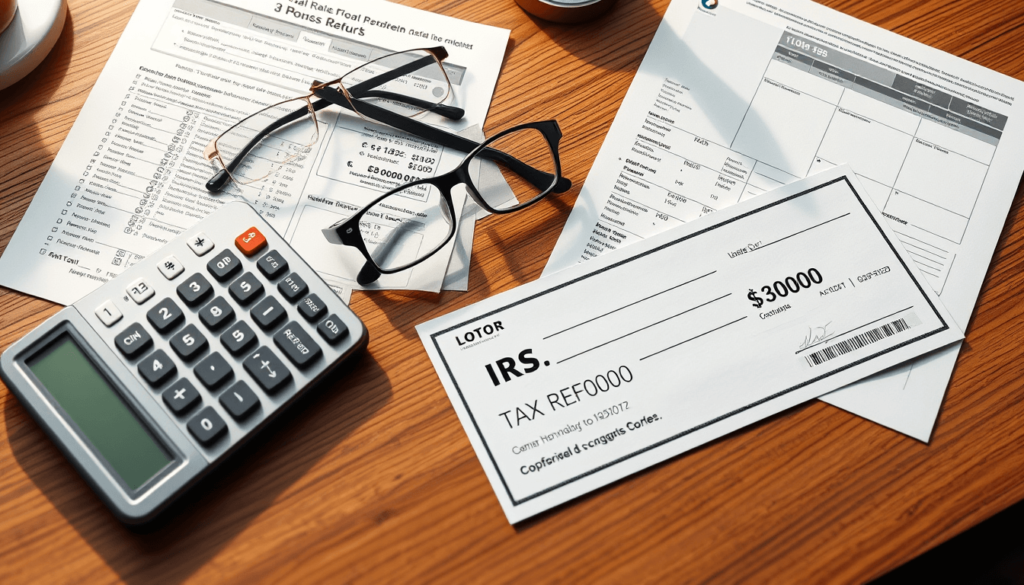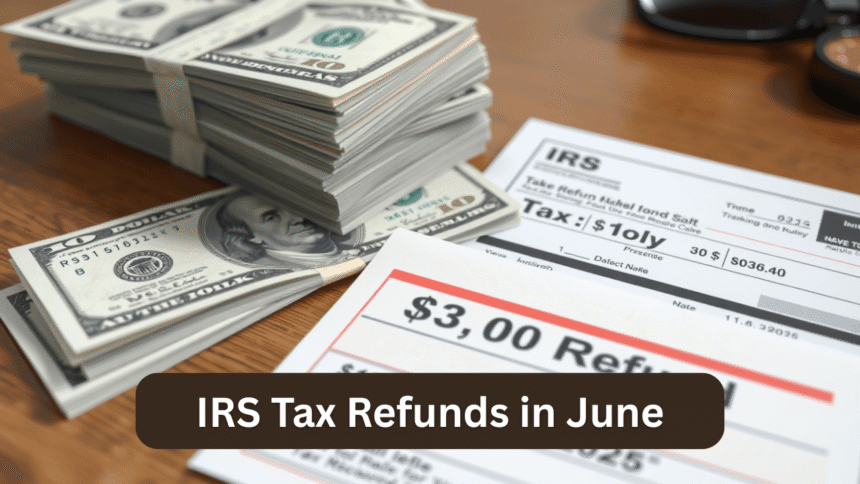Many Americans eagerly await news from the Internal Revenue Service, and this June brings promising developments. The IRS is issuing tax refunds that could reach up to $3,000 for eligible taxpayers. With the cost of living increasing, these refunds come as a much-needed financial boost for millions of households.
While the average refund amount for this year stands at approximately $2,945, a significant number of taxpayers will receive the maximum amount depending on various eligibility criteria. Understanding these requirements and the timeline for distribution is essential for those hoping to receive their refund without delay.
Who Qualifies for the $3,000 IRS Refund?
Eligibility for the $3,000 refund largely depends on the taxpayer’s individual or household filing details. Those who have overpaid taxes through withholding or estimated tax payments during the 2024 tax year are eligible for refunds. This overpayment may occur due to miscalculated withholdings, eligibility for certain tax credits, or deductions that reduce the overall tax liability.
Taxpayers claiming credits such as the Earned Income Tax Credit (EITC) or the Additional Child Tax Credit (ACTC) may see larger-than-average refunds. However, these credits are subject to additional IRS review to prevent fraud, which can delay the processing time slightly.
In addition to this, individuals who filed their taxes early and used the electronic filing system with direct deposit are the first in line for receiving the funds. If you fall into this category, the IRS already has your banking information and can send your refund faster.
Refund Schedule for June 2025

The IRS follows a structured payment schedule based on the date your return was accepted. For returns filed electronically between May 1 and May 15:
- Taxpayers using direct deposit can expect their refunds between May 22 and June 4.
- Those who opted for a paper check might receive refunds between May 29 and June 11.
- Taxpayers who filed by mail may have to wait until June 26 to July 10.
For tax returns filed between May 16 and May 31:
- Direct deposit recipients should receive refunds between June 6 and June 19.
- Paper check recipients will likely get theirs between June 13 and June 26.
- Paper filers will receive refunds from July 11 to July 25.
The IRS strongly encourages e-filing and choosing direct deposit, as this combination ensures the fastest and most secure refund delivery. For individuals still relying on paper filing and checks, a longer wait should be expected due to processing delays and postal delivery timelines.
Common Causes of Delays in IRS Tax Refunds
Despite best efforts, some refunds might take longer than anticipated. The IRS has outlined several common reasons why a refund might be delayed:
- Paper Filing: Mailing your return can delay processing times by weeks. If you’re still filing this way, consider switching to electronic filing for next year.
- Incorrect Information: Mistakes in personal details like Social Security numbers, birthdates, or banking information can lead to return rejection or delays.
- Claims for Tax Credits: As mentioned earlier, returns that include credits like the EITC or ACTC are often subject to additional verification, which can extend the timeline.
- Identity Verification: If the IRS flags your return for potential identity theft, they will contact you for verification. This extra step can delay your refund but is a necessary security measure.
- Amended Returns: If you made corrections after submitting your return, the amended version may take up to 20 weeks to be processed.
It is important for taxpayers to double-check their return for accuracy before submitting. A correct and complete return reduces the chance of delays and improves the odds of receiving your refund on time.
How to Track Your Refund Status

For those who are curious about the status of their refund, the IRS provides a helpful tool called “Where’s My Refund?” This online service allows taxpayers to check their refund progress 24 hours after e-filing. Paper filers will need to wait four weeks before status updates are available.
To use this tool, you’ll need:
- Your Social Security number or ITIN
- Your filing status (e.g., single, married filing jointly)
- The exact amount of your expected refund
The system provides three primary updates:
- Return Received – The IRS has received your return and has begun processing.
- Refund Approved – Your refund has been reviewed and approved.
- Refund Sent – Your refund has been dispatched, either via direct deposit or check.
For most taxpayers using direct deposit, the refund will appear in their bank account within five business days after the IRS issues the refund. If you are receiving a check, add an extra week or two for postal delivery.
Also, check out wheon.com finance tips.
IRS Transition to Digital Refunds
One significant change coming this year is the IRS’s gradual transition away from paper checks. The agency is actively encouraging taxpayers to opt for digital payments, which are faster, more secure, and environmentally friendly. By September 2025, the IRS expects to phase out most paper check refunds except in cases where electronic delivery is not possible.
This shift is aimed at reducing administrative costs and improving the overall efficiency of the refund process. Digital payments are not only quicker but also safer from theft or mail fraud, which can be concerns with physical checks.
Tax Relief Extensions for Disaster-Affected Areas
Taxpayers living in federally declared disaster areas are receiving extended filing and payment deadlines. For example, individuals in states affected by recent floods and tornadoes now have until November 3, 2025, to file their federal taxes and claim any due refunds.
This extension ensures that people in disaster zones are not penalized for missing standard deadlines. The IRS has also relaxed certain documentation requirements for affected areas, allowing individuals to claim losses more easily and process claims more efficiently.
These residents are still eligible for the $3,000 IRS tax refunds if they meet the qualifying criteria and overpaid during the previous tax year. Their payments, however, may be processed slightly later due to the extended deadlines.
Also read about How To Create A Small Business Marketing Strategy.
Anticipation Builds as June Arrives
As June begins, taxpayers across the country are keeping a close eye on their bank accounts and mailboxes. With average refund amounts reaching record highs and the potential for a full $3,000 for some, these refunds represent a meaningful financial boost. Whether used to catch up on bills, pay down debt, or invest in the future, the upcoming refunds are generating excitement and offering relief.
It is more important than ever to ensure that all tax documents are in order, filing methods are optimized, and tracking tools are used properly. The 2025 tax season has proven to be unique in many ways, but for those eligible, the promise of generous IRS tax refunds makes it one to remember.
For millions of Americans, the countdown to their IRS tax refunds has begun. By staying informed and prepared, taxpayers can ensure they don’t miss out on the benefits this tax season has to offer. As the IRS continues to modernize its systems and streamline operations, refunds may become faster and more accessible in the years ahead.

